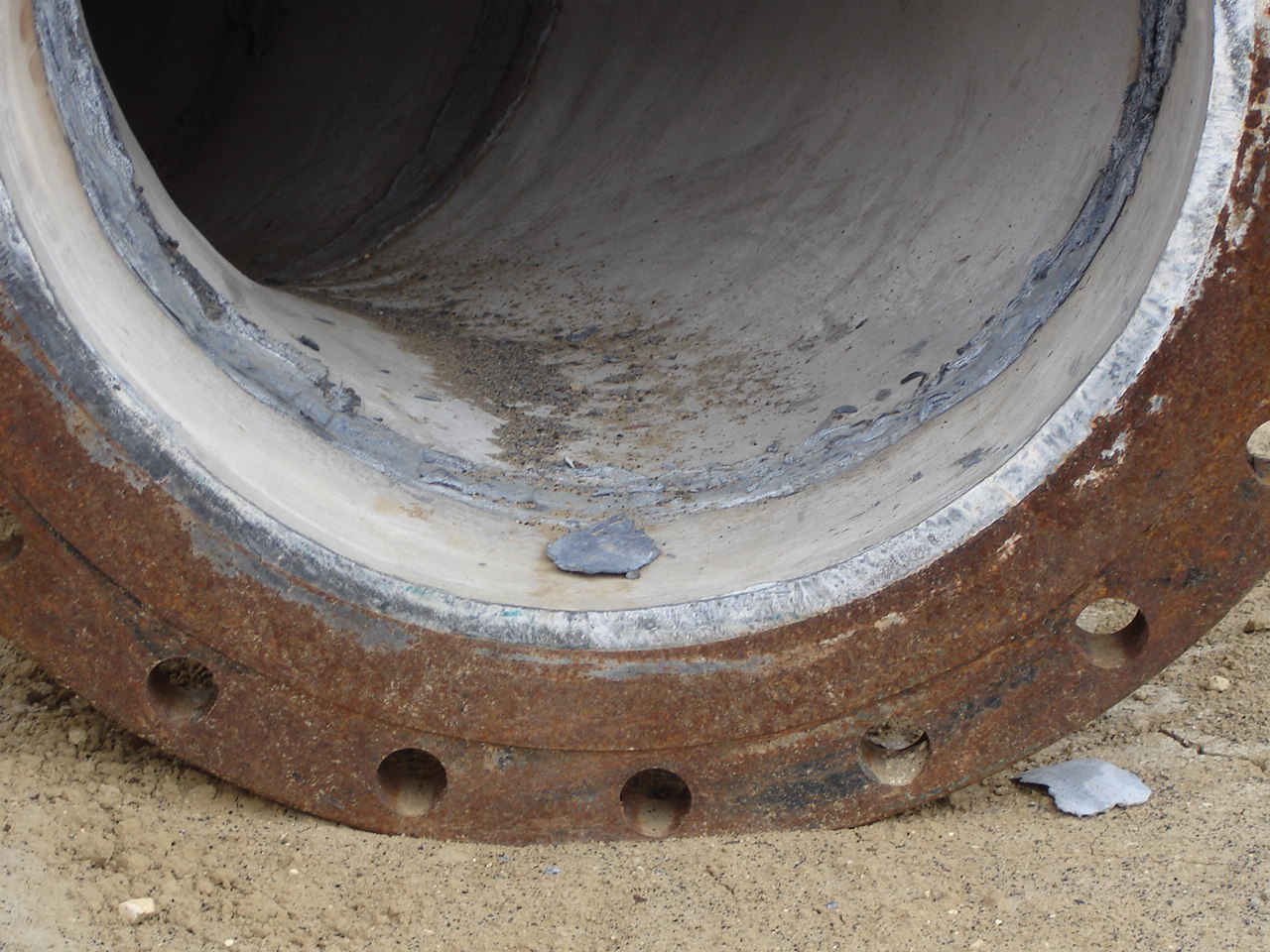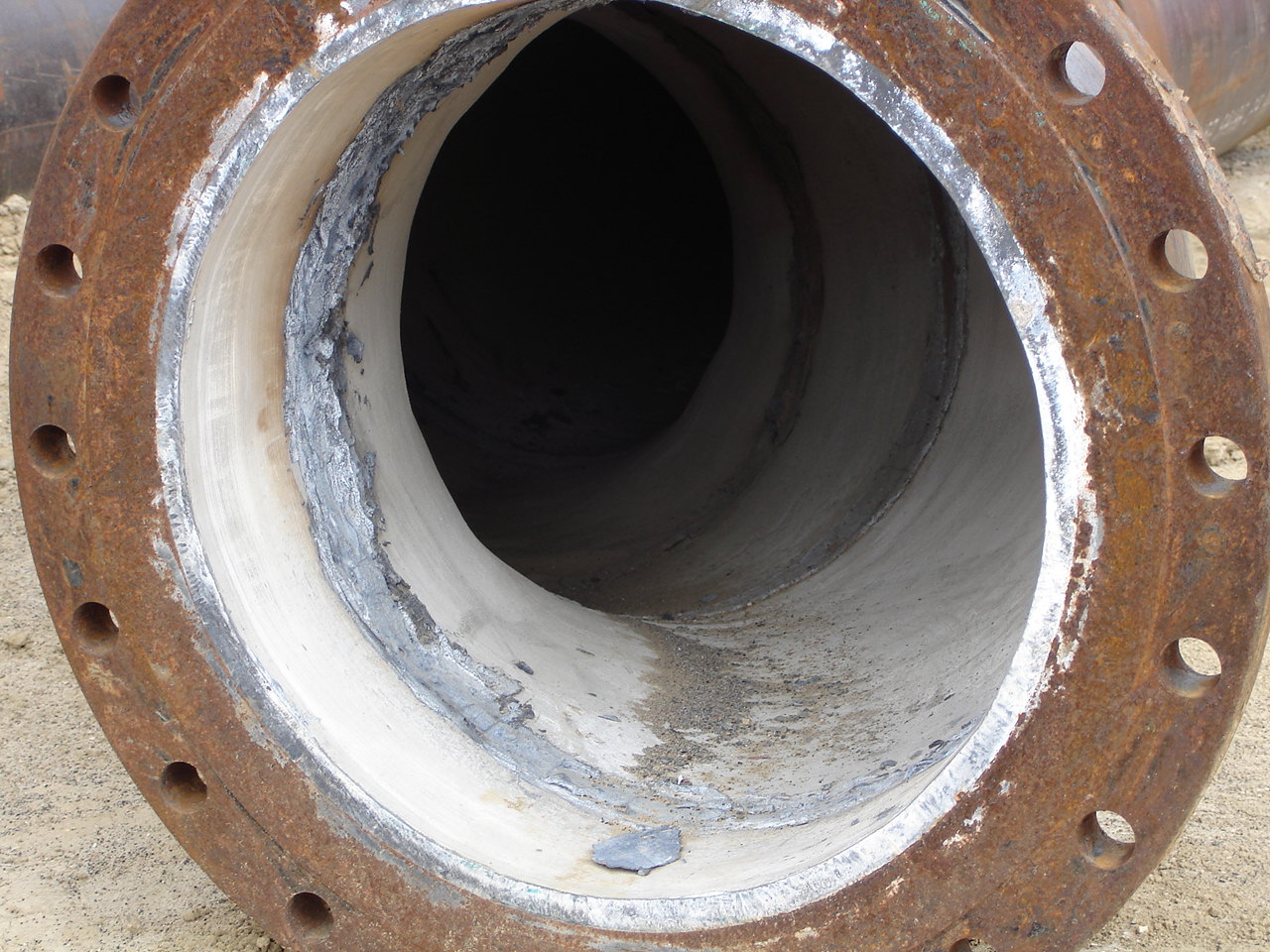Cement Lined Pipe

Cement Lined Pipe Benefits
Corrosion Protection - The cement lining acts as a barrier between the interior of the pipe and the corrosive elements in the fluid or gas it carries. This helps extend the lifespan of the pipe and reduces the need for frequent maintenance or replacement.
Smooth Interior Surface - The cement lining creates a smooth and uniform interior surface, which helps to improve the flow of fluids and reduce friction within the pipe. This can lead to energy savings and increased efficiency in fluid transport.
Versatility - Cement lined pipes can be used for a wide range of applications, including potable water distribution, wastewater transport, and the conveyance of various chemicals and slurries.
Longevity - Properly installed and maintained cement lined pipes can have a long service life, making them a cost effective choice for many infrastructure projects.
Compatibility - Cement lining is compatible with a variety of materials commonly used in pipe construction, such as steel and ductile iron.
It's important to note that cement lining is just one of several lining materials available for pipes, and the choice of lining material depends on factors such as the specific application, the type of fluid or gas being transported, and environmental conditions. Proper installation and maintenance are crucial to ensure the effectiveness and durability of cement lined pipe.
Cement Lined Pipe Advantages and Disadvantages | |
|---|---|
| Advantages | Disadvantages |
|
|
Cement Lined Pipe Design Considerations
Designing cement lined pipe systems involves several considerations to ensure that the pipes meet the required performance standards and provide long-term reliability. By taking these design considerations into account, engineers and designers can ensure that cement lined pipe systems are well suited for their intended applications, providing effective corrosion protection and reliable fluid transport. Collaboration with experienced professionals and adherence to industry standards and guidelines are essential for successful design and implementation. Here are some key design considerations for cement lined pipe systems.
Material Selection - Choose the appropriate base pipe material (steel, ductile iron) based on the application's requirements, including factors like pressure, temperature, and the nature of the transported fluid.Pipe Diameter and Thickness - Determine the pipe diameter and wall thickness based on the flow rates, pressure, and other hydraulic requirements of the system. Consider factors like pipe size transitions and fittings.
Cement Mortar Thickness - Select the suitable thickness of the cement mortar lining based on the corrosiveness of the fluid and the expected service life. Thicker linings provide better corrosion protection but can reduce the pipe's internal diameter.
Pipe Joints - Choose appropriate joint types (flanged, threaded, welded) that are compatible with the application and ensure leak tight connections. Properly sealing joints is crucial for preventing leaks and maintaining the integrity of the lining.
Coatings and Linings for External Surface - Consider protective coatings or linings for the external surface of the pipe to prevent corrosion and extend the pipe's overall lifespan. This is especially important for buried or submerged pipes.
Support and Hanger Systems - Design a support and hanger system that can adequately bear the weight of the pipe and the fluid it carries. Proper support prevents sagging, which can stress the lining.
Expansion and Contraction - Account for thermal expansion and contraction in the design to prevent damage to the cement lining. Expansion joints or flexible couplings may be required to accommodate temperature variations.
Pipe Routing and Layout - Plan the pipe routing and layout carefully to minimize bends, elbows, and abrupt changes in direction, as these can affect fluid flow and increase wear on the lining.
Installation and Quality Control - Ensure that the pipes are installed following industry standards and manufacturer recommendations. Quality control during installation, including the inspection of the cement lining, is crucial to detect any defects or damage.
Testing and Inspection - Conduct pressure testing and inspections to verify the integrity of the cement lining and the overall pipe system before putting it into service.
Environmental Considerations - Consider the environmental conditions and potential exposure to chemicals or contaminants in the transported fluid when designing the lining material and thickness.
Maintenance and Repair - Plan for periodic maintenance and inspection of the cement lined pipes to monitor their condition and address any issues promptly.
Cement Lined Pipe Fittings and Pipe Span Considerations
In order to put a branch connection on a cement lined pipe such as a Weld O'let or a Thread O'let, the pipe installer will need to penetrate the pipe and cement. If the cement mortar is not repaired properly or if it becomes damaged, corrosive fluid can become trapped between the cement mortar and the pipe wall which will lead to corrosion. The best way to engineer this out is to utilize bleed rings or reducing tees as much as possible.
Pipe that has been coated with cement has a smaller maximum span than carbon steel that has not. The reason for this is when the pipe is deflecting, the bottom half of the pipe is in compression and the top, in tension. Cement performs excellently in compression but extremely poorly in tension. What will happen is the pipe concrete will either flake off or crack in such a way that corrosive fluid gets between the concrete and pipe wall which eventually lead to premature failure.
Cement Lined Pipe Size |
||
| Nominal Pipe Size (in) | AWWA C205 Mortar Thickness (in) | Maximum Span (ft) |
| 2 | 0.25 | 21 |
| 2-1/2 | 0.25 | 26 |
| 3 | 0.25 | 26 |
| 4 | 0.25 | 26 |
| 6 | 0.25 | 34 |
| 8 | 0.25 | 39 |
| 10 | 0.25 | 40 |
| 12 | 0.3125 | 42 |
| 14 | 0.3125 | 43 |
| 16 | 0.3125 | 45 |
| 18 | 0.3125 | 48 |
| 20 | 0.3125 | 48 |
| 22 | 0.3125 | 50 |
| 24 | 0.375 | 50 |
Mortar Thicknesses
The thickness of the cement mortar lining in cement lined pipes can vary depending on several factors, including the specific application, the corrosiveness of the fluid being transported, industry standards, and engineering considerations. The selection of cement mortar lining thickness in pipes should be a carefully considered decision that takes into account the specific needs of the project, including corrosion resistance, hydraulic performance, industry standards, and cost considerations. Engineers and designers should work closely with manufacturers and refer to relevant standards and guidelines to make informed decisions regarding lining thickness.
Cement lined pipe, also called Mild Steel Cement Lined, abbreviated as MSCL, is pipe that is internally coated with a mortar like compound that acts as a barrier between the carbon steel pipe and the process. The lining may be applied by hand, as is the case with pipe fittings, or with a machine. It is commonly used in the transmission of potable water and sewage applications. It is also used when the process fluid may corrode regular carbon steel pipe.
Due to the fragility of the cement lined coating, it is recommended that the pipe is handled as delicately as possible. This includes the use of rubber covered hooks or other equipment that prevents the damage of the lining.
Mortar Thicknesses often vary per manufacturer. Typical mortar thicknesses are: 1/4", 5/16", 3/8", 1/2", 5/16", 3/4", 1"
Cement Lined Pipe Standards
- ASTM Standards
- ASTM C541 / C541M - Standard Specification for Linings for Asbestos-Cement Pipe

Tags: Pipe Pipe Fitting Tables Concrete Pipeline


